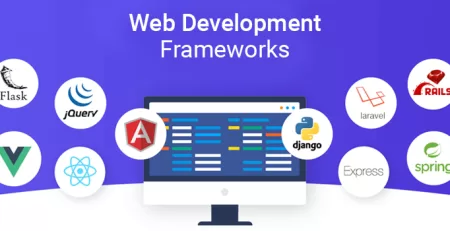Website development is the process of creating a website from scratch or updating an existing one. It involves several stages, including planning, design, development, testing, and maintenance. A website can be developed for a variety of purposes, including e-commerce, information sharing, communication, and entertainment.
The first step in website development is planning. During this stage, the developer must identify the purpose of the website, its target audience, and the content that will be included. The developer must also decide on the layout and structure of the website, as well as any additional features that will be included. This stage is critical as it sets the foundation for the rest of the development process.
The next stage is design. During this stage, the developer creates the visual elements of the website, such as the color scheme, layout, and overall aesthetic. The design should be consistent with the website’s purpose and target audience. The developer must also consider the user experience and make sure that the website is easy to navigate and use.
After the design stage, the developer moves on to the development stage. During this stage, the developer writes the code that brings the website to life. There are several programming languages that can be used to develop a website, including HTML, CSS, JavaScript, and PHP. The developer must also consider the website’s performance and make sure that it loads quickly and is compatible with different devices and browsers.
Once the development stage is complete, the developer moves on to testing. During this stage, the developer checks the website for any bugs or errors, and makes sure that it is functioning as intended. The developer must also test the website’s compatibility with different devices and browsers, as well as its performance.
The final stage is maintenance. Once the website is live, the developer must continue to monitor it and update it as needed. This includes fixing bugs, making updates to the content, and adding new features. The developer must also make sure that the website is secure and that any sensitive information is protected.
In addition to the traditional stages of website development, there are many other aspects to consider. One of these is search engine optimization (SEO). SEO is the process of optimizing a website to improve its ranking in search engine results pages (SERPs). This includes using keywords, backlinks, and other techniques to improve a website’s visibility in search engines.
Another important aspect of website development is mobile optimization. With more and more users accessing the internet on their mobile devices, it’s crucial that a website is optimized for mobile. This includes making sure that the website is responsive, meaning that it adjusts to the size of the device’s screen, and that the layout is easy to use on a small screen.
Website development also includes the use of Content Management Systems (CMS). A CMS is a software that allows users to manage their website’s content without the need for technical knowledge. Popular CMS include WordPress, Joomla and Drupal. These can be useful for those who want to update and manage their websites on their own.
In addition, website development also includes the use of e-commerce platforms. These platforms provide the necessary tools for businesses to sell their products or services online. Popular e-commerce platforms include Shopify, WooCommerce and Magento. These platforms can help businesses to create an online store quickly and easily.
Overall, website development is a complex process that requires knowledge of different programming languages, design principles, and user experience. It is also important to stay up to date with the latest technology and trends to ensure that the website is functional, visually appealing and user-friendly. By considering all of these elements, a developer can create a website that is not only effective, but also tailored to the needs of the target












